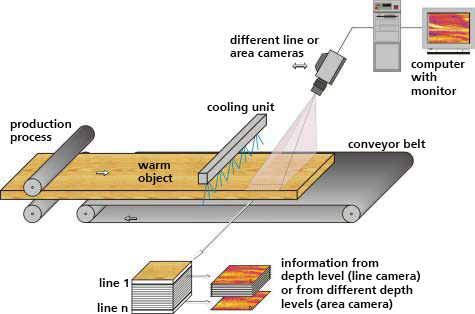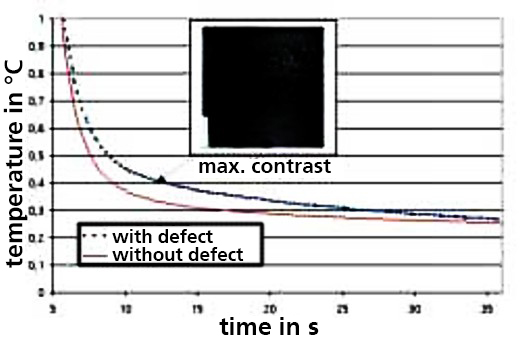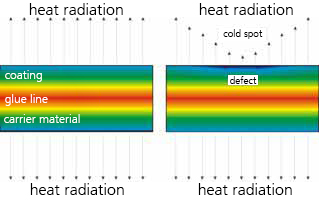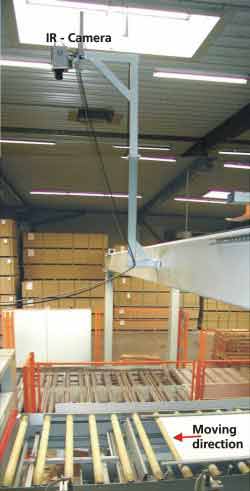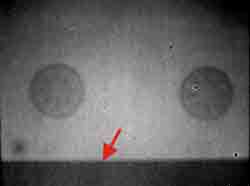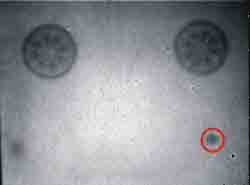Principle
For online measurement of material weaknesses, the material heated in the production process is moved uniformly on a conveyor belt under a thermography line scan or area scan camera. The camera must be mounted at an appropriate height above the object to be measured so that the area to be examined can be examined with the optics used. The line of the line scan camera or the individual lines of the area scan camera are aligned so that they record the thermal image of the object perpendicular to the direction of travel of the conveyor belt.
By moving uniformly under the camera, an image of the entire object is built up from the individual line or area images using a connected computer.
